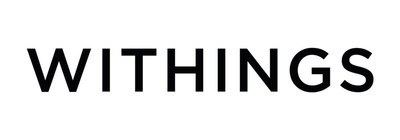|
A Withings survey reveals the urgent need to raise awareness.
Inequalities also affect health, particularly cardiovascular health: they lead to under-diagnosis and poorer care for women, resulting in avoidable excess mortality.
45.9% of women among Withings US users1 say they put their loved ones' health before their own.2
40.4% of women among Withings US users are unaware of female symptoms of heart attack (nausea, epigastric pain, weakness, fatigue) and would be unable to diagnose it.3
25% of women say they don't know what to do in the event of a heart attack, and this rises to 28.7% for women aged between 30 and 504.
Over 1/3 of respondents were unaware of the leading cause of death for women: cardiovascular disease5.
A quarter (24.4%) of women over 55 do not measure their blood pressure regularly, despite the higher risk factors after menopause6
47% of women don't seek medical attention despite cardiovascular symptoms7
62% of women with high blood pressure are not diagnosed8, and only 20% receive appropriate and effective treatment.9
BOSTON, March 7, 2024 /PRNewswire/ -- Cardiovascular disease kills one women every 33 seconds in the USA10. Yet 80% of these deaths could be avoided11 through early diagnosis and awareness of symptoms and risk factors specific to women. To help reduce this excess mortality, Withings is committed to raising awareness via an exclusive survey, and providing the means to tackle their main cause: hypertension, which accounts for the majority of cardiovascular deaths.12
Cardiovascular disease is the number one cause of death in women
Cardiovascular disease is the leading cause of death for women, ahead of breast cancer, and remains surprisingly unknown and earning its name as "the silent killer". Yet 50% of women are unaware of their cardiovascular risk.13
Withings survey warns of inequalities in cardiovascular health
45.9% of American women surveyed by Withings admit to putting their loved ones' health before their own. 47% of women say they do not consult a doctor if they experience worrying cardiovascular symptoms (breathlessness, fatigue, pain).14
Health philosopher Mathilde Chevalier-Pruvo points out that "Gender inequalities have consequences for health. Women have been culturally taught to take care of others instead of taking care of themselves. They don't have time for themselves and their health. Their delay in consulting a doctor results in a delay in diagnosis estimated at four years on average, with an enormous loss of chance as to the effectiveness of treatment."
Hypertension: a silent killer that's all too commonplace
The delay in diagnosis is particularly marked in the case of hypertension: 62% of women with high blood pressure are unaware that they have it.15 Only 20% of them receive appropriate and effective treatment.16 Treatments have been validated in clinical studies focusing on male cohorts, and are less suited to female physiology.17
"Hypertension is the leading cause of cardiovascular pathologies18 (such as stroke, myocardial infarction, heart failure and fibrillation) and therefore the leading cause of mortality," as Cardiologist Stéphane Laurent points out. "Why is it so? Because it silently damages the entire cardiovascular system: in response to increased pressure, the heart thickens and arteries become stiffer, disrupting the functioning of sensitive organs such as the kidney, heart muscle or brain, leading to death or serious cognitive or motor sequelae.
Withings acts and alerts on hypertension and calls for progress on 4 concrete initiatives:
- It is essential that every woman should be able to monitor her blood pressure regularly, at a pace suited to her risk factors, using home self-measurement in real life, to avoid the white-coat effect and to track variations during the day, which are greater in women.
- Several recent studies show that the association between rising blood pressure and the onset of cardiovascular pathologies (stroke, heart attack in particular) is much greater in women than in men, and starts at lower blood pressure levels. These studies therefore suggest the need to define specific blood pressure recommendations for women19 in order to better control their risk of cardiovascular complications. 20 21 22 23
- Women's specific risk factors for hypertension need to be taken into account: mental workload and stress (a cardiovascular risk factor24 that is still too little known by the general public, yet a major one in women) and hormonal impregnation (particularly during pregnancy, menopause and when taking certain hormonal contraceptives).25
- We need to raise awareness of women's symptoms of the pathologies to which hypertension can lead (in particular, the symptoms of infarction in women26: nausea, epigastric pain, fatigue, shortness of breath), and encourage women to seek medical advice without delay if they have the slightest doubt.
Withings and cardiovascular monitoring in women: the need for a real-life, longitudinal approach
Monitoring cardiovascular health and hypertension involves tracking a range of biomarkers. In addition to blood pressure, they may include: heart rate, ECG, arterial stiffness, activity score, and body composition including body fat percentage. This monitoring must be carried out in real life and continuously, throughout the day. This is necessary both to avoid the white-coat effect that can unduly increase measurements in the doctor's office, and because women's blood pressure is more labile than men's, and varies more over the course of the day.
However, it's important not to add another element to an already excessive mental load. That's why Withings is convinced of the importance of offering non-intrusive devices that fit seamlessly into everyday lifestyles: watches, scales and blood pressure monitors. All the measurements collected provide longitudinal, real-life data. This data is essential for advancing clinical research into female hypertension, a field in which Withings is actively involved, collaborating with hospitals and university centers around the world.
To find out more about the epidemiology and physiology of cardiovascular disease in women, sources and studies, doctor and patient testimonials via our dedicated page on Withings.com.
Withings 2024 Women's Global Heart Health Survey Methodology:
This study was carried out on a sample of 10,824 women aged between 18 and 90 living in France (2,697), the USA (2,323) and Germany (2,584). Data was collected between February 28 and March 3 via an online questionnaire sent to female members of the Withings user base.
About Withings
Withings, world leader in connected health, integrates powerful, clinically-validated health scans into everyday objects (watches, scales, blood pressure monitors, sleep sensors, thermometers) to provide accurate, clinical, real-life health monitoring for millions of users worldwide.
A pioneer in real-life cardiovascular monitoring, Withings offers hybrid connected watches that track heart rate and its variations day and night, perform medical-grade electrocardiograms to detect pathologies such as atrial fibrillation, and monitor blood oxygenation. Connected scales, invented by Withings, measure not only body composition, but also exclusive biomarkers such as pulse wave velocity, which attests to cardiovascular age and warns of arterial stiffness caused in particular by hypertension. Its connected blood pressure monitors enable home monitoring of blood pressure trends, by sharing reliable and exhaustive measurement reports with a doctor, and can integrate a stethoscope for home detection of valvulopathy, which is more frequent in cases of high blood pressure.
To find out more, visit withings.com and contact us on Facebook, Instagram or X (formerly Twitter).
1 Women among Withings US users surveyed by Withings as part of the Withings 2024 Women's Global Heart Health Study. The methodology note is detailed at the end of the document.
2 German and American women among Withings users prioritize self-care to a greater extent, while remaining at an alarmingly low level of self-care: 41.7% of women in Germany and 46% of women in the USA say they prioritize caring for others. In Withings 2024 Women's Global Heart Health Study.
3 In Germany and the United States, the figures remain problematic but are better: 40.4% and 37% respectively. Withings 2024 Women's Global Heart Health Study.
4 Withings 2024 Women's Global Heart Health Study.
5 Withings 2024 Women's Global Heart Health Study.
6 Withings 2024 Women's Global Heart Health Study.
7 Mosca L, Mochari-Greenberger H, Dolor RJ, Newby LK, Robb KJ. Twelve-year follow-up of American women's awareness of cardiovascular disease risk and barriers to heart health. Circ Cardiovasc Qual Outcomes. 2010; 3:120–127.
8 Worldwide trends in hypertension prevalence and progress in treatment and control from 1990 to 2019: a pooled analysis of 1201 population-representative studies with 104 million participants, The Lancet, 2021; 398 : 957-80.
9 Worldwide trends in hypertension prevalence and progress in treatment and control from 1990 to 2019: a pooled analysis of 1201 population-representative studies with 104 million participants, Lancet 2021; 398: 957–80
10 National Center for Health Statistics. Multiple Cause of Death 2018–2021 on CDC WONDER Database. Accessed February 2, 2023.
11 World Health Organization, European Office for the Prevention and Control of Noncommunicable diseases, « Cardiovascular diseases ».
12 Connelly PJ, Currie G, Delles C. Sex Differences in the Prevalence, Outcomes and Management of Hypertension. Curr Hypertens Rep. 2022 Jun;24(6):185-192.
13 Mosca L, Mochari-Greenberger H, Dolor RJ, Newby LK, Robb KJ. Twelve-year follow-up of American women's awareness of cardiovascular disease risk and barriers to heart health. Circ Cardiovasc Qual Outcomes. 2010; 3:120–127.
14 Mosca L, Mochari-Greenberger H, Dolor RJ, Newby LK, Robb KJ. Twelve-year follow-up of American women's awareness of cardiovascular disease risk and barriers to heart health. Circ Cardiovasc Qual Outcomes. 2010; 3:120–127.
15 Worldwide trends in hypertension prevalence and progress in treatment and control from 1990 to 2019: a pooled analysis of 1201 population-representative studies with 104 million participants, The Lancet, 2021; 398 : 957-80.
16 Worldwide trends in hypertension prevalence and progress in treatment and control from 1990 to 2019: a pooled analysis of 1201 population-representative studies with 104 million participants, Lancet 2021; 398: 957–80
17 Dougherty AH. Gender balance in cardiovascular research: importance to women's health. Tex Heart Inst J. 2011;38(2):148-50.
18 Connelly PJ, Currie G, Delles C. Sex Differences in the Prevalence, Outcomes and Management of Hypertension. Curr Hypertens Rep. 2022 Jun;24.
19 All current hypertension guidelines are gender mixed.
20 Hongwei Ji, Teemu J. Niiranen, Florian Rader, Mir Henglin, Andy Kim, Joseph E. Ebinger, Brian Claggett, C. Noel Bairey Merz and Susan Cheng, Sex Differences in Blood Pressure Associations With Cardiovascular Outcomes, Circulation, 2021;143:761–763.
21 Wills AK, Lawlor DA, Matthews FE, Sayer AA, Bakra E, Ben-Shlomo Y, Benzeval M, Brunner E, Cooper R, Kivimaki M, et al. Life course trajectories of systolic blood pressure using longitudinal data from eight UK cohorts. PLoS Med. 2011;8:e1000440. doi: 10.1371/journal.pmed.1000440.
22 Ji H, Kim A, Ebinger JE, Niiranen TJ, Claggett BL, Bairey Merz CN, Cheng S. Sex differences in blood pressure trajectories over the life course. JAMA Cardiol. 2020;5:19–26. doi: 10.1001/jamacardio.2019.5306.
23 Chapman N; Ching SM, Konradi AO; Nuyt AM; Khan T; Twumasi-Ankrah B; Cho EJ; Schutte AE; Touyz RM; Steckelings UM; Brewster LM. Arterial Hypertension in Women: State of the Art and Knowledge Gaps. Hypertension. 2023;80:1140–1149. DOI: 10.1161/HYPERTENSIONAHA.122.20448
24 Kulkarni S, O'Farrell I, Erasi M, Kochar MS. Stress and hypertension. WMJ. 1998 Dec;97(11):34-8.
25Société Française d'HyperTension Artérielle (SFHTA), Expert consensus: HTA, hormones and women, 2019.
26 C. McSweeney, M. Cody, P. O'Sullivan, K. Elberson, D.K. Moser, B.J. Garvin, Women's early warning symptoms of acute myocardial infarction, Circulation, 108 (2003), pp. 2619-2623.

 View original content to download multimedia:https://www.prnewswire.com/news-releases/inequalities-in-the-face-of-cardiovascular-risk-women-the-no-1-victims-302083315.html View original content to download multimedia:https://www.prnewswire.com/news-releases/inequalities-in-the-face-of-cardiovascular-risk-women-the-no-1-victims-302083315.html
SOURCE Withings

|







